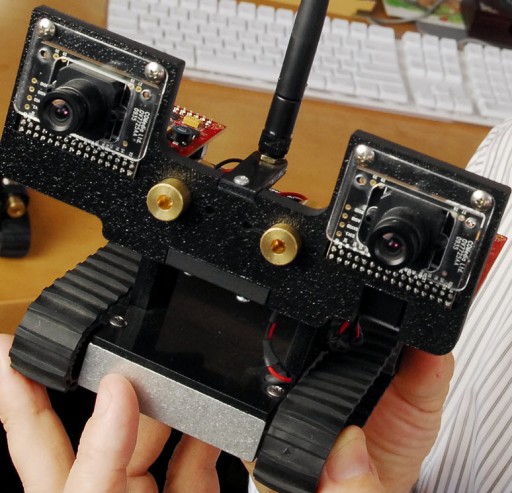Tiny autonomous robotic vehicles could swarm into hazardous situations
May 17, 2011
Autonomous robotic vehicles with advanced collaborative exploration and mapping capabilities have been developed by a team from the Georgia Institute of Technology, the University of Pennsylvania, and the California Institute of Technology/Jet Propulsion Laboratory (JPL).
The wheeled robots measure about one foot square. The researchers are working toward platforms small enough to be held in the palm of one hand.
In an experiment, the robots performed their mapping work using two types of sensors: a video camera and a laser scanner. Supported by onboard computing capability, the camera located doorways and windows, while the scanner measured walls. An inertial measurement unit helped to stabilize the robot and provide information about its movement.
Data from the sensors were integrated into a local-area map that was developed by each robot using a graph-based technique called simultaneous localization and mapping (SLAM). The SLAM approach allows an autonomous vehicle to develop a map of either known or unknown environments, while also monitoring and reporting on its own current location.
Fully autonomous and collaborative, these tiny robots could swarm by the scores into hazardous situations, the researchers said.
The research was sponsored by the Army Research Laboratory under Cooperative Agreement Number W911NF-08-2-0004.
